(THIS ARTICLE IS MACHINE TRANSLATED by Google from Norwegian)
Eugene Richards: The Run-on of Time
International Center of Photography,
New York City. Until January 20.
The award-winning photographer Eugene Richards sits here, at 74 years old, in front of the audience, and talks about the images in this winter's retrospective exhibition in International Center of Photography (ICP) in New York (see also video recording). He seems sane and warm – but tells us he has a temper.
In the many texts written about him, it can be read that it all started with the fact that he was once summoned to Vietnam, but sent the summons back the clip. While waiting for the reaction, he took a one-year degree in photography at Minor White at the Massachusetts Institute of Technology (MIT).
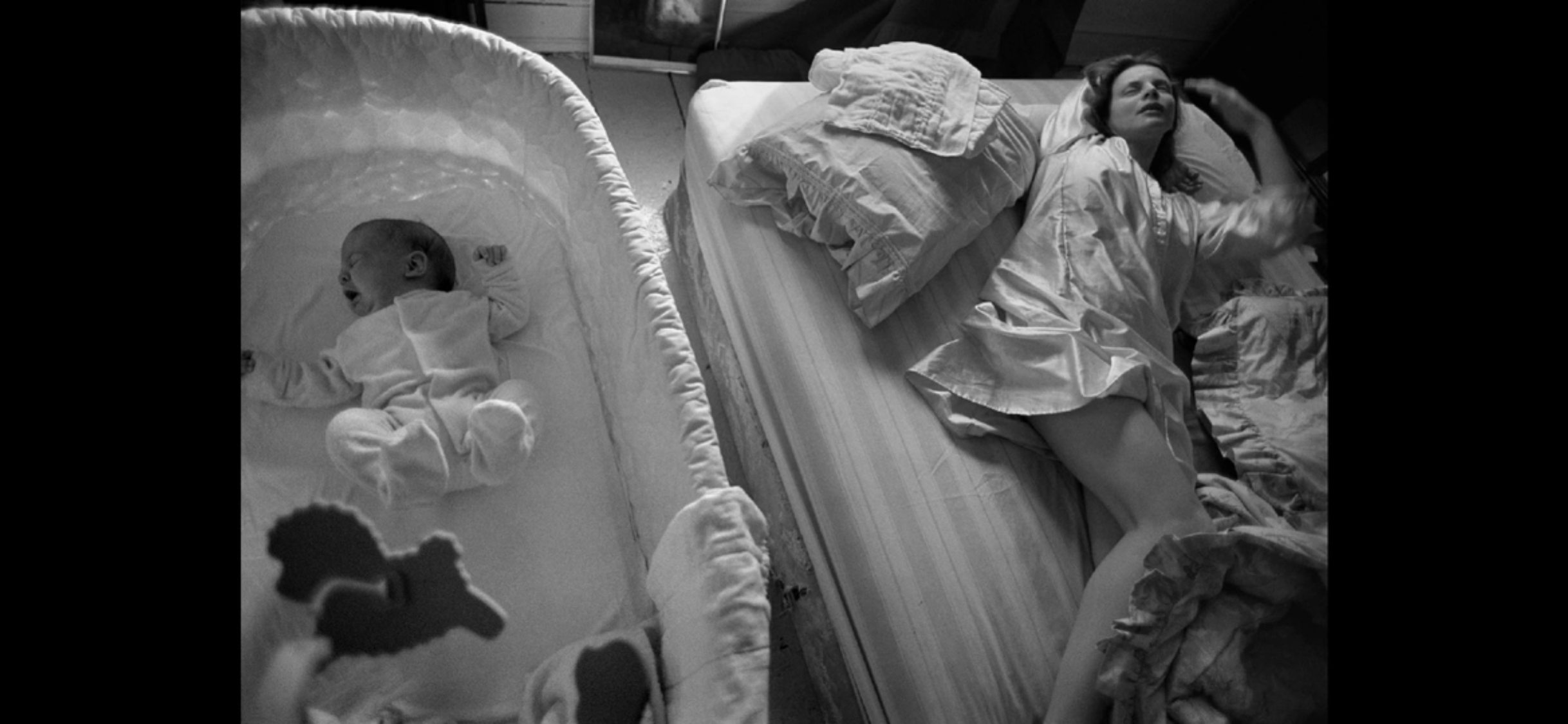
This was the time around the assassinations of Martin Luther King and Robert Kennedy, but what made this man spend 50 years of his life on documentary photography? Does he perhaps have this old knot in his heart that he wants to untie – where life's paradoxes, differences and destinies prompt an existential curiosity and urge to document? A drive towards questioning what we perceive as injustice, abuse of power and human decay? Thus, one documents how wrong it can go for a society, and here, in the current exhibition, especially the American one. But if you are to be able to open your heart, you must also have a drive towards beauty – or a distant ideal of a friendlier community for all.
It is possibly in the gray area, this photographing…
But photographing can also, as for Richards, be about conveying personal stories. Maybe as a kind of therapy. Here he is not entirely unlike his namesake William Eugene Smith, who is known for his photo essays. Both WE Smith and Robert Frank are photographers he recognizes as teachers, although he developed his own photographic style characterized by a closeness to those he photographs. These are individuals who tell about their fates, often with Richards' camera almost right up in their faces. He is known for using wide-angle and short camera lenses rather than telephoto lenses, which he perceived as too distant. Those who are photographed and interviewed do not care that he is completely close-up, since he has already spent a long time with them – perhaps days – before the camera was pulled out of the bag.
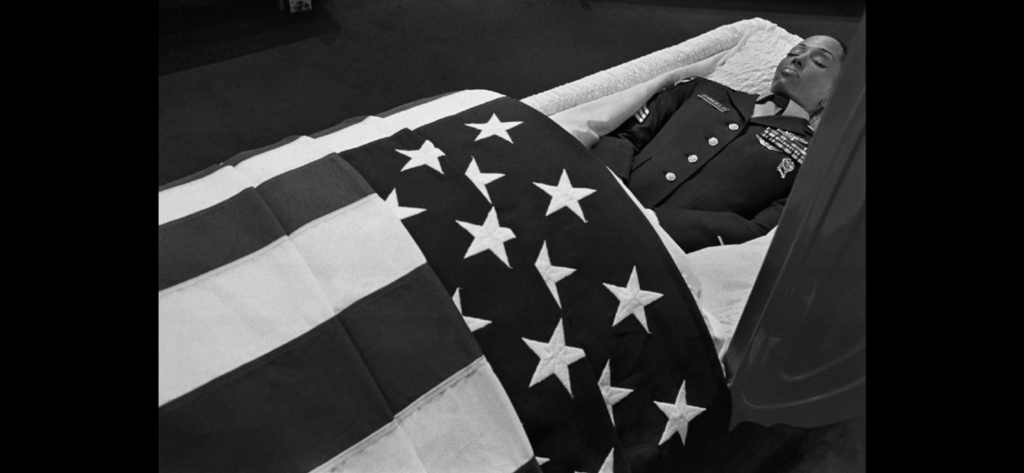
His photographs can also show faces halfway to the edge of the frame, have unusual angles or curved outer edges, which are typical of short lenses. This is deliberate, Richards has said: With such partially distorted images, he wants to show that these are photographs, and not the whole truth. He is aware that the photographs are only sections of reality and time. That is why he prefers the fragmentary, individual destinies, small and poignant stories from people, where he looks into their existence – but no more.
Individual destinies
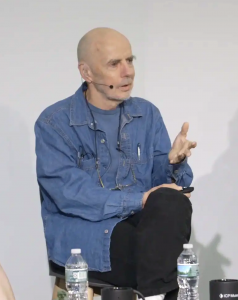
Here at ICP, the retrospective exhibition is divided thematically, with subtitles such as "Metaphor to Document", "A Personal Vision", "American Lives and Socioeconomic Realities", "Health and Humanity" and "War and Terrorism". Curator April Watson chose such a move rather than a purely chronological one. And if you wander around the room, the black-and-white photos of blacks from the US's southern Arkansas Delta are telling and present – as faces can be. The socio-economic conditions emerge via individual destinies, where poverty and misery can lead smell into the dead ends of substance abuse. In Arkansas, Richards also founded the newspaper Many Voices, which was published biweekly for a couple of years, in an effort to highlight the plight of blacks. But then they wanted him to go: This was theirs, not a white man's fight. Richards continued his work for the less fortunate in his home town of Dorchester in Massachusetts. The environments he sought out were often characterized by crime and violence, but as he himself said at ICP: Some people gladly took him in and protected him. With his camera, he therefore documented the inside of the many homes he was invited into.

Richards was still the money. He therefore took commercial assignments for various magazines – up to the 70s photographers, for example, created photo series for Life and Look. From this and especially pictures they would not print – like a gay couple with their young child in the middle of the bed – he made photo collections in his own book releases.
Crack environments
Richards eventually photographed from urban crack environments, populated by black people. His pictures from there became the book and the series Cocaine True, Cocaine Blue (1994), something he was really hated for by many in the 90s, and called "racist!" He was attacked in the media for presenting only blacks as crack heads, many whites suffered the same fate. Politically correct criticism? He defended himself in the New York Times, where the series had been printed, saying that he wanted to show the results of drug addiction, of how especially black poor people without opportunities ended up on the slippery slope.
But the label "racist" stuck, he got a cold shoulder from most people – for a while. You do not become a legend without some wounds along the way…
Very close
Was it in Sudan that Richards photographed a 93-year-old grandmother with her dying little great-grandson, whom she then buried? In any case, it was in Nigeria that he found a 15-year-old girl who was unaware that she had AIDS, which resulted in the death of her young child (see above). On the other hand, the exhibition shows Richards' wife Janine and son Sam (who sat in the hall during the lecture, now many years later), where baby and mother lie exhausted in their beds, as well as one where the same greedy little boy is breastfed – Richards glimpsed when he commented on this photo.
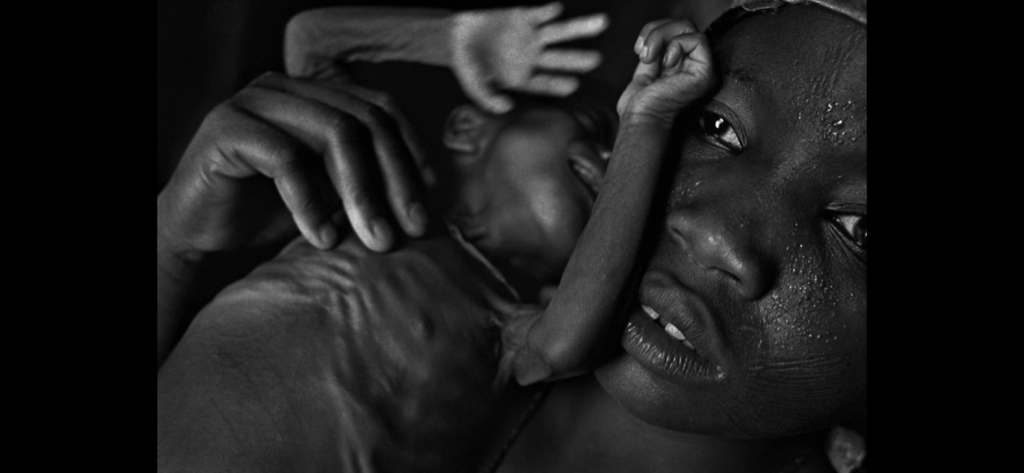
But the exhibition also featured the series with Richards' ex-wife, Dorothea Lynch, whom he met already at the university, and who later developed breast cancer. She even wanted him to document this. She laughs as Richard snaps (see below) when the doctor asks if she still feels like a woman – after a breast is scraped out for cancer cells. The exhibition also has a number soundtrack – one of them can be heard on the internet, with Lynch talking about getting cancer. She dies.
Like the couple Dorothea Lange and Paul S. Taylor (And American Exodus, 1939) Richards worked extensively with his spouses. Thus, it was later Janine Altongy who dragged him down to the tragedy on September 11, 2001, and she became the voice or text of the book Stepping Through the Ashes (Aperture, 2002). This huge loss came to the fore here with rescue workers, relatives and other Americans.
In his books, Richards has chosen to supplement images with texts from what the photographed say, or what he himself or his wife adds. In the "War and Terrorism" section of the exhibition, several war veterans are interviewed, not just the young woman lying in the coffin, or the man with fatal injuries with his shirtless. But also him who has had half his head shot off, bent over his mother. In the text that follows, she says that she has chosen to nurture him, and as a mother she never gives up. Here, Richards conveys fragments from the consequences of warfare in Afghanistan or Iraq.
He has an urge to question what we perceive as injustice.
In the "Health and Humanity" section, we find pictures from the time when Richards was in an operating theater in the emergency department of a hospital. He snapped an unwashed corpse – something he himself brought up during the presentation at ICP, in response to a question about morality. He also brought out the photos from when he followed Doctors Without Borders, or inside a mental hospital in Mexico. The latter with such deplorable conditions that it was closed down after the photos were published. It is possibly in the gray area, this photographing the mentally retarded, who neither understand what he is doing there, nor can refuse him to use the camera.
From the heart
So where does this journey end: with color pictures of women's shoes, a burnt down church, or abandoned houses in North Dakota? No, eventually Richards began film production.
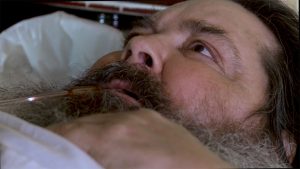
The discomfort accompanies the journey, but let me mention the American Melvin Cook from the Ku Klux Klan: He is overweight and sick – now cared for by his cursing sister. Cook tells of everyone he shot, stabbed or beat up just because they annoyed him. Well, because of his hate crime, he spent 28 of his 52 years in prison. After a single photo session, Cook wanted Richards back, and then it was filming. In front of the oppressed, this time it was the abuser who wanted to tell his life story: "I really regret it," we could hear being said, before the man in the bed ended up dead (picture).
Richards' photographs are fragments or sections of reality.
The wretched of society
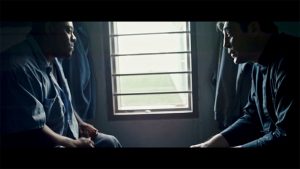
With film, it is still the documentary that applies. In Richards' new film Thy Kingdom Come (2018, see 5 minutes in the video), Richards recounts the misery of society – a drug-addicted woman and a black prison bird. But Richards' grip is now to use actor Javier Bardem (ex. No Country for Old Men, 2007) dressed as a priest – Richard's alter ego? – in the encounter with vulnerable human destinies. Richards deliberately put together photojournalism, documentary and art photography.
But what about the woman who died a few weeks after the filming, or the prisoner replied? Both of them were actually aware that Bardem was a well-dressed actor. Still, this was quickly forgotten or overlooked when they were given the opportunity to open their hearts.
Some get the opportunity to tie the knot.
Richards visited Norway in 2011 at DOK:11
(Literature House in Oslo).
If video: On the Run of Time

